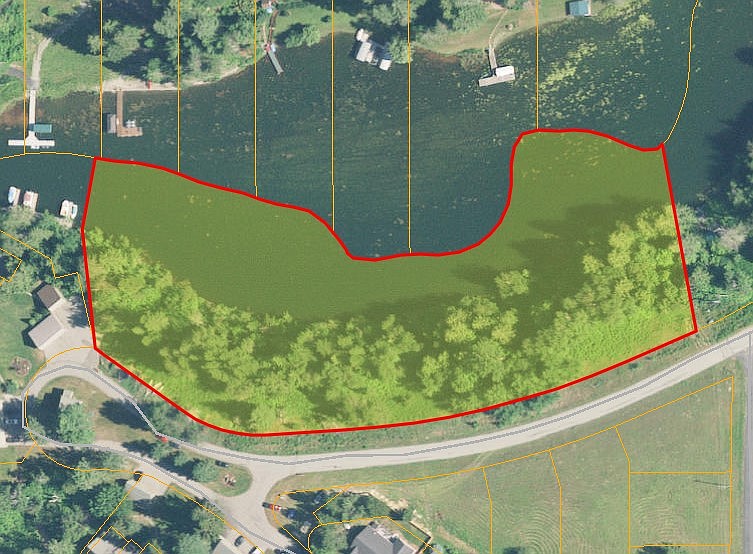Boyer Slough development raises concerns
▶️ Listen to this article now.
Some Bonner County residents are raising concerns over potential environmental impacts after a developer removed natural vegetation and trees on the shore of Boyer Slough without prior approval.
According to a complaint filed by the Lake Pend Oreille Waterkeeper, a preliminary plat for a subdivision was submitted for approval by Tricore Investment, LLC to the Bonner County Planning Department on Jan. 22.
Even though the plat has yet to be approved, LPOW and neighbors said developers began clearing vegetation from the 4.8-acre site in May. In its complaint to the county, LPOW said the move violated multiple sections of Bonner County code.
Specifically, the complaint cites a requirement in county code section 12-714 to maintain a vegetative buffer within 40 feet of all shorelines to protect water quality.
Reducing the vegetative buffer negatively impacts water quality by increasing nutrient load in addition to erosion, said Steve Holt, executive director of LPOW. Specifically, he noted the high levels of phosphorus in Lake Pend Oreille, which connects to the Boyer Slough.
He noted that the Boyer Slough already has water contaminant issues including wastewater discharge, agricultural runoff, repeated herbicide application, and algae blooms.
“[If we don’t address it], it’s going to create bigger problems than just Eurasian water milfoil,” he said.
The code lists leaving existing non-invasive vegetation as the “preferred” option for the vegetative buffer, which may be enhanced by planting additional non-invasive native and non-native plant species. The alternative option includes planting and maintaining non-invasive plant species.
County code also states that, in vegetative buffers, standing trees including conifers, hardwoods and snags shall be left intact within 40 feet of the ordinary high water mark on each side of all perennial streams.
However, developers removed both vegetation and trees along the waterway, which the LPOW complaint states the group was notified of on May 17.
Bonner County Planning Director Milton Ollerton said the county has three full-time enforcement officers who inspect for setbacks on homes and other code enforcement. There are currently 23 zoning and 35 building violations the county has recorded this year. Violations, he said, are relatively common and can be difficult to enforce.
“Whenever you see grass planted on the lake, someone’s in violation,” he said.
Because the developers have been working with the county to ensure compliance, Ollerton said they won’t be fined or charged.
“We have litigated these cases in the past and we have prevailed,” he said. “These guys [are working] with us.”
Holt said the violation indicates more needs to be done to bolster enforcement, especially given the increasing rate of shoreline development.
The county recently hired a compliance and permit supervisor, who will create operating procedures for the complaint process, Ollerton said. A process will be established with fines and penalties to create a more prompt response.
Ollerton noted that not all violators are aware they are breaking rules. The removal of trees, for instance, would not ordinarily require a permit.
“Should they have known? Yeah, everyone should know,” he said. “[But] you have the right to log your property … Nobody’s perfect at this.”
For enforcement officers, it can be difficult to spot violations near waterways because they're obscured from roads, Ollerton said, though the county is working to reduce that problem through better imagery in mapping.
“It almost always requires a complaint from the neighbors that a change is occurring in the shoreline,” he said. “The county is working on ways to improve this through better imagery in mapping.”
The complaint also cites BCRC 12-722.1, procedures for new subdivisions, which requires the applicant to develop a grading and stormwater management plan before final play approval is given.
“This premature action by the developer is not in line [the county’s environmental standards] and is putting the slough at risk for further degradation of sediment if immediate action is not taken to mitigate the issue,” the LPOW complaint stated. “The Boyer Slough embankment has proven highly susceptible to erosion and sliding as demonstrated just to the west, towards the mouth of the slough, where a slide occurred [four] years ago and rendered the waterway unnavigable.”



